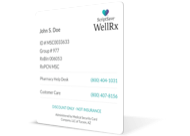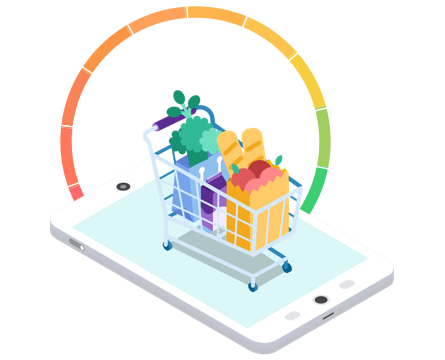Copyright 2024
Medical Security Card Company, LLC
All Rights Reserved
WellRx will never sell your personal information. Period. By signing up I agree to WellRx's terms of use and privacy policy.
By Libby Pellegrini MMS, PA-C
April 27, 2020
If you have ever found a pill bottle with a faded label in the dark crypts of your medicine cabinet, you are not alone. It is common for the bathroom to become a pharmacologic museum of sorts, especially if there are multiple people living in a household, each with their own chronic medical conditions.
However, before you throw out those old pill bottles in a cathartic fit of spring cleaning, you may want to identify the medications, especially if there is a chance they are high-risk medicines that should be disposed of in a different way.
When it comes to the case of the mystery pill bottle, technology can be an amazing asset. Pill identifiers can take the guesswork out of medicine identification and help put your mind at ease. Read on to learn more about how pill identifiers work.
First, a few definitions. A “pill” is a blanket term that describes an oral method of medication delivery. There are two common types of pills: tablets (“tabs”) and capsules. Why is it important to know the difference between a tablet and a capsule? Some pill identifiers will ask you to indicate the specific form of your medication.
Tablets are made of compressed powder, and most are meant to be swallowed, though some can be crushed, broken, or chewed. A capsule has an outer gelatin-like layer that holds a substance within, which can either be in powder or liquid form. Capsules are typically meant to just be swallowed, not crushed, broken, or chewed.
If you are considering opening a capsule or breaking a tablet, check in with your pharmacist first to make sure that this is acceptable. Sometimes altering a tablet or capsule can interfere with the function of the medication.
Once you have determined what type of pill you have in hand, two important features help in describing its appearance. The first is its color. Pill colors come in an impressive variety, so it can be helpful to pull up the pill identifier that you intend to use in order to try to match the pill’s color to the provided template. There can be many nuances when it comes to color. For example, within the “yellow” category, your pill could be described as amber, beige, peach, yellow, or yellow orange.
The next step in identifying your pill is analyzing its shape. Though the classic pill shape is round or oblong, certain pills can stray from this pattern. A pill identifier will usually give you many options to choose from when determining your pill’s shape, from hexagonal to bullet-shaped to shield-shaped to a modified rectangle.
After describing its shape and color, the last step in identifying your pill is finding the imprint. Sometimes this may be worn off or indecipherable. However, if you can pinpoint it, the imprint is generally a combination of letters or numbers, on one or both sides of your pill. It may be printed in ink or engraved. A pill identifier will allow you to input the letters and numbers via free-text.
Now that you have your pill’s shape, color, and imprint, you can input these details into a pill identifier, such as the one available via ScriptSave® WellRx. The identifier will draw from a wide database of pill characteristics to provide you with a list of possible pill identities. You can filter through these results and look at the featured pills in order to determine the identity of your pill. The identifier makes this process easy and simple by providing full color pictures of each pill so you can do a side-by-side comparison.
Once you have identified your pills, you may want to dispose of them, particularly if you have found them on the floor, if they are expired, or if you are no longer taking the medication. The U.S. Food and Drug Administration provides guidelines regarding safe drug disposal. Some medications can be dropped off at a safe disposal site, or, if one is not readily available, they can be immediately disposed of by flushing them down the toilet. This will help keep everyone in your household as safe as possible.
References:
https://www.fda.gov/drugs/safe-disposal-medicines/disposal-unused-medicines-what-you-should-know
Libby Pellegrini is a nationally certified physician assistant. She currently works in emergency medicine, where she sees and treats a broad spectrum of illnesses across all age ranges. She holds a journalism degree from Northwestern University.

For your convenience, use the ScriptSave® WellRx mobile app. Now savings are well in hand, right at the pharmacy counter. Save on your family's prescription medicines.
Learn More
Your choice. Get a ScriptSave WellRx Savings Card. Or Download the free mobile app from the App Store or Google Play Store
Get A Card
ScriptSave WellRx Grocery Guidance leverages leading-edge nutritional data science to help you know which food products on your grocery store shelf are truly good for YOU.
Healthy Foods For YouTags:

November 07, 2024

October 23, 2024

May 07, 2024
You need to log into the site to use this feature
This feature requires registration. Sign up or log in to your free WellRx account to gain access to this and other tools to help make managing your medications and wellness easier.
Benefits Include:
 Store & manage your medication list
Store & manage your medication list
 Medication pricing updates
Medication pricing updates
 Medication information
Medication information
 Pill & refill reminders
Pill & refill reminders
 Medication journal & mood log
Medication journal & mood log
This feature requires registration. Sign up or log in to your free WellRx account to gain access to this and other tools to help make managing your medications and wellness easier.
Benefits Include:
 Store & manage your medication list
Store & manage your medication list
 Medication pricing updates
Medication pricing updates
 Medication information
Medication information
 Pill & refill reminders
Pill & refill reminders
 Medication journal & mood log
Medication journal & mood log
You will be redirected to your program in 5 seconds.
Our Terms and Conditions and Privacy Policy have recently been updated.
By declining you will be logged out of your account